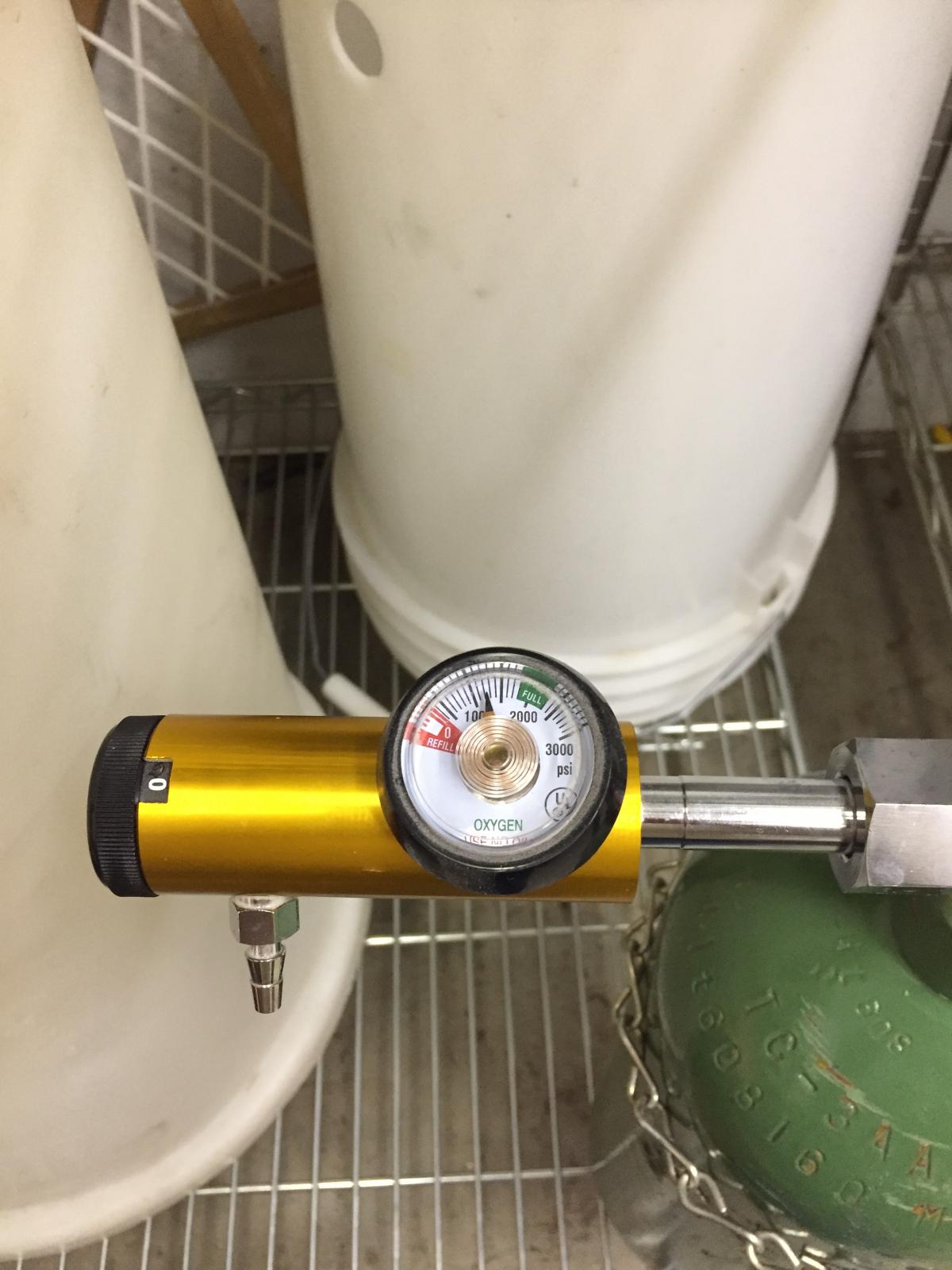How is everyone determining flow rate? I have a regulator w/ a valve on it but no gauge nor any way to determine how many liters/minute are flowing.
I have bubbles making it to the surface, as I have no reason to think I'm getting less dissolved O2 just because it's not all dissolving. I also figure I'm creating an oxygen-rich headspace in the fermenter and some of that will dissolve back into the wort. How much, same problem as liters per minute. No way to know.
Are you using the disposable red O2 tanks from the hardware store? Those regulators don't have an adjustable flow rate. I would turn it open
just enough to see some thick foaming develop around the stone when first immersed, then pulled out a Starsan container, or your wort/beer.
Note, with those tanks, close the valve all the way after use. They are notoriously slow leakers. Someone here claimed to get 20+ batches out of that small tank, which seems about right.
Shamelessly
copied from here:
Bernzomatic =
1.4 oz. of O2 = 40 grams = 1.25 moles O2 (40 g/32g/mole of O2)
= 28 liters of O2 at STP (1 mole of a gas is 22.4 liters at STP - standard temp & pressure)
28 liters of O2 dispensed at 1/4 liter for 4 minutes (1 liter) per batch is 28 batches! At twice the usage per batch, 14 batches. Use frugally at slow flow rates.
My regulator/flow meter looks similar to the one in the OP's picture, except it's green and goes all the way down to 1/32 l/m.

As with CO2, there is no O2 blanket covering your wort/beer after applying O2. It may be a bit richer in O2 for a short while, especially in a narrow carboy neck, but will equalize soon with the atmosphere. In an open bucket, it flows right out. Unless you oxygenate under pressure (e.g., in a keg) there's no way to get that O2 that bubbled out, back in there.





